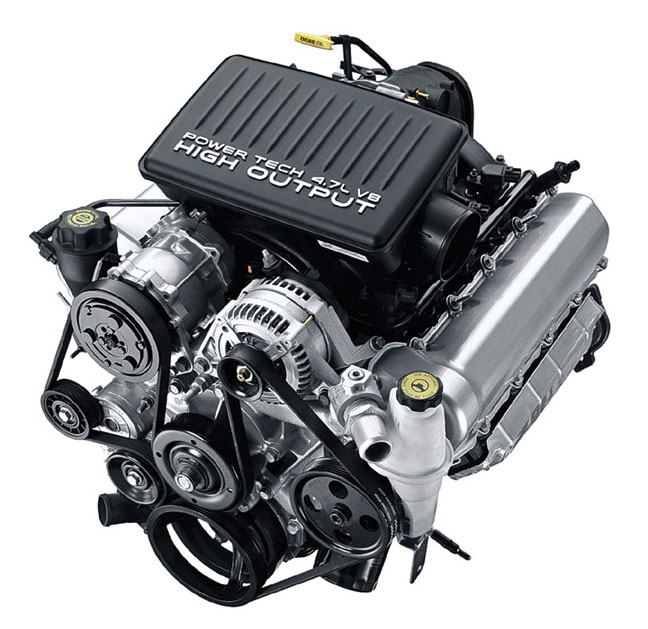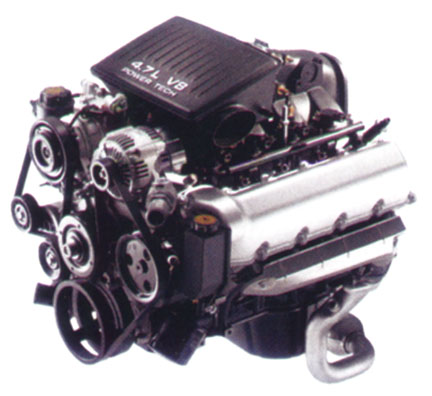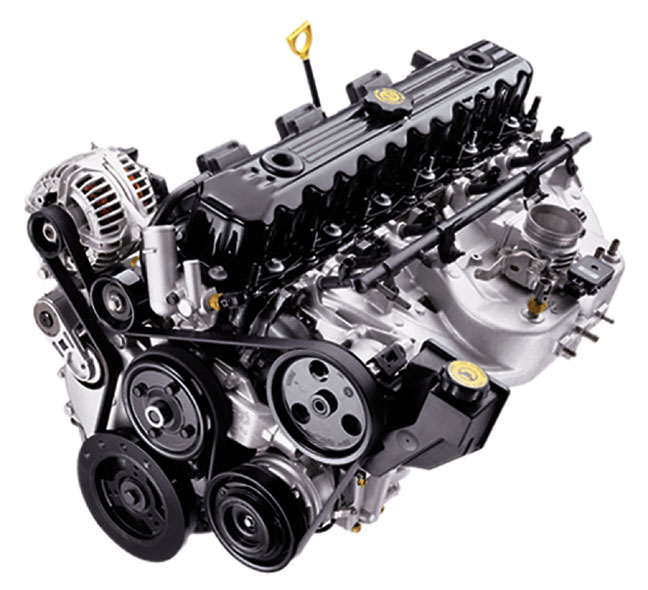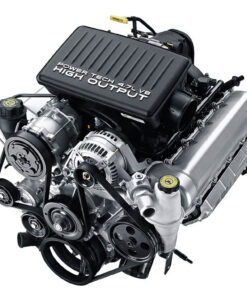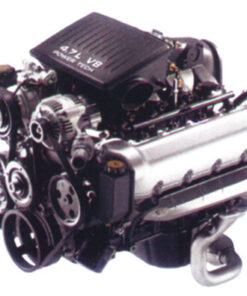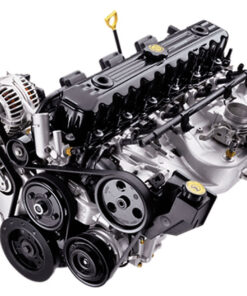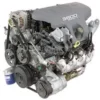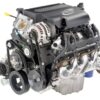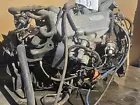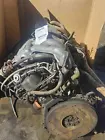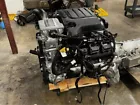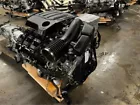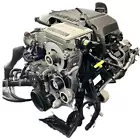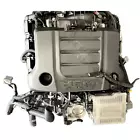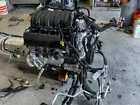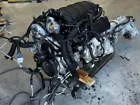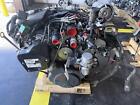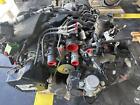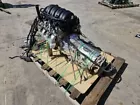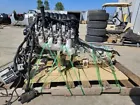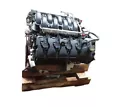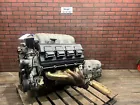WJ series 4.0L Engine
3,500 $ Original price was: 3,500 $.3,000 $Current price is: 3,000 $.
The WJ series 4.0L Engine (1999–2004) came with the well-known 4.0L inline-6 engine as one of its base engine options.
The WJ series 4.0L Engine (1999–2004) came with the well-known 4.0L inline-6 engine as one of its base engine options.
JWJ series 4.0L Engine Overview
Engine Specs
-
Engine Name: AMC 242
-
Type: Inline-6 (I6), naturally aspirated
-
Displacement: 4.0 liters (3964 cc)
-
Valvetrain: OHV (12-valve)
-
Fuel System: Sequential multi-point fuel injection
-
Compression Ratio: 8.8.1
-
Horsepower:
-
~195 hp @ 4600 rpm
-
-
Torque:
-
~230 lb-ft @ 3000 rpm
-
Transmission Options
-
Automatic:
-
42RE 4-speed auto (for 4.0L models)
-
-
Manual:
-
Not offered in the WJ (auto only for 4.0L in this series)
-
4WD Systems
Reliability & Reputation
-
The 4.0L I6 engine is legendary for:
-
Simplicity
-
Longevity (often over 300,000 miles with proper care)
-
Low-end torque, great for off-road use
-
-
Downsides:
-
Poor fuel economy (~14–18 mpg)
-
Somewhat underpowered for the WJ’s weight compared to the V8 options
-
Common Issues
-
Rear main seal leaks
-
Valve cover gasket leaks
-
Crank position sensor failures
-
Cooling system wear (radiator, water pump, thermostat)
Fun Fact:
The WJ series 4.0L Engine was one of the last vehicles to use this classic AMC engine before it was discontinued in 2006. It had minimal changes over its ~20-year run.
Let me know if you’d like:
-
A comparison between the 4.0L and the 4.7L V8 in the WJ
-
Maintenance tips
-
Torque specs for engine work
-
Or a PDF of the WJ service manual
Comparison: WJ series 4.0L Engine vs. 4.7L V8 in the WJ
| Feature | 4.0L I6 | 4.7L V8 (Standard/HO) |
|---|---|---|
| Power | ~195 hp / 230 lb-ft | 235–265 hp / 295–325 lb-ft |
| Towing Capacity | ~5,000 lbs | Up to 6,500 lbs |
| Fuel Economy | 14–18 mpg | 13–17 mpg |
| Complexity | Simpler, easier to service | More complex (OHC, electronics) |
| Reliability | Very high | Good, but depends on maintenance |
| Off-Road Use | Excellent low-end torque | Strong power, especially HO |
Summary:
-
Choose the WJ series 4.0L Engine if you want simplicity, durability, and ease of repair.
-
Choose the 4.7L V8 if you need more power or towing capability.
Maintenance Tips for the WJ series 4.0L Engine
Regular Maintenance Intervals:
-
Oil Change: Every 3,000–5,000 miles (use 10W-30 or 5W-30)
-
Coolant Flush: Every 2–3 years
-
Spark Plugs: Every 30,000 miles (use Champion Copper Core plugs)
-
Transmission Fluid (42RE): Every 30,000 miles
-
Differential Fluid: Every 30,000–50,000 miles
Common Preventive Repairs:
-
Radiator replacement after ~100,000 mi (plastic end tanks fail)
-
Water pump tends to go around 120k
-
Crankshaft Position Sensor failure often causes stalling/no-start
-
Exhaust manifold may crack over time (common but not catastrophic)
Torque Specs (WJ series 4.0L Engine)
Here are a few useful torque specs for common jobs:
| Component | Torque Spec |
|---|---|
| Cylinder head bolts | 110 ft-lbs (in 3 steps) |
| Valve cover bolts | 55 in-lbs |
| Intake/exhaust manifold nuts | 23 ft-lbs |
| Oil pan bolts | 11 ft-lbs |
| Spark plugs | 30 ft-lbs |
| Lug nuts (wheel) | 95 ft-lbs |
Let me know if you need the full torque spec list or a repair procedure for a specific component.
Recommended Mods for the WJ series 4.0L Engine
-
Cold Air Intake (slight throttle response improvement)
-
Exhaust header (replaces crack-prone OEM)
-
Upgraded radiator (aluminum, 3-core)
-
PCM tuning (limited options, but available for minor gains)
-
Lift kit (pairs well with low-end torque for off-roading)
Manuals and Diagrams
If you’re working on your WJ, I can provide:
-
PDF service manuals
-
Wiring diagrams
-
Fuse box layouts
-
Vacuum line diagrams
-
Factory torque specs
-
OBD-II trouble code meanings
-
Performance & Mod Potential
-
Drivetrain & Axle Info
-
OBD-II Trouble Codes (Common for 4.0L)
-
Service Manual Links (if requested)
-
Off-Roading Tips for WJ with 4.0L
1. Performance & Modding the WJ series 4.0L Engine
The 4.0L I6 isn’t a horsepower monster, but it has huge potential for reliability and torque-based mods:
Common Performance Mods:
| Mod | Gains / Notes |
|---|---|
| Header + Exhaust | ~5–10 hp, reduces manifold cracking |
| Cold Air Intake | Slight throttle response |
| Bored Throttle Body | Minor power bump, better airflow |
| PCM Tune (Superchips/HP) | Small gains (~10 hp), shift tweaks |
| Electric fan swap | Frees up some parasitic drag |
| Camshaft upgrade (Comp 68-231) | More torque and high-RPM power |
| Stroker Build (4.6L–4.7L) | 240–270 hp and 300+ lb-ft torque |
A 4.6L stroker (using a 4.2L crank, 4.0L block, and 4.0L head) is a popular and proven way to get V8 power with I6 reliability.
2. Drivetrain, Axles & Transfer Cases in the WJ series 4.0L Engine
Transmission:
-
42RE 4-speed automatic
-
Electronically controlled
-
Common, reliable with regular service
-
Lockup torque converter
-
Weakest point if neglected — keep it cool and clean
-
Transfer Cases:
-
NP242 Selec-Trac (most desirable for off-roading):
-
Full-time and part-time 4WD modes
-
2WD / 4 Full-time / 4 Part-time / Neutral / 4LO
-
-
NP247 Quadra-Trac II (less common with 4.0L):
-
No 2WD mode
-
Computer-controlled clutch packs
-
Axles:
| Axle | Type | Notes |
|---|---|---|
| Dana 30 | Front (solid) | Used in all WJ 4.0L models |
| Dana 35 or Dana 44A | Rear — varies by trim |
-
Dana 35: Weaker, used on lower trims
-
Dana 44A: Aluminum center section, stronger but limited aftermarket
For serious off-roading or larger tires (33″+), many swap the Dana 35 for a Ford 8.8 or Dana 44 solid axle.
3. Common OBD-II Trouble Codes (4.0L I6)
These are codes that often pop up in a WJ with the 4.0L:
| Code | Meaning | Likely Fix |
|---|---|---|
| P0300-P0306 | Cylinder misfires | Plugs, coil rail, crank sensor |
| P0132/P0138 | O2 Sensor circuit (rich/high volts) | Replace upstream/downstream O2 |
| P0455 | EVAP gross leak | Check gas cap, EVAP lines, leak test |
| P0340 | Camshaft position sensor fault | Replace cam sensor (on timing cover) |
| P0123 | TPS sensor high voltage | Replace TPS sensor |
| P0700 | Transmission control system fault | Indicates transmission code stored |
Use a high-quality scan tool (like Autel, Innova, or JScan) to get manufacturer-specific codes.
4. Off-Roading Tips (WJ 4.0L Specific)
The WJ is highly capable stock, and with the 4.0L, you’ve got a reliable torque base.
Recommended Setup:
-
Tires: 31″ or 32″ A/T or M/T
-
Lift: 2″ budget boost or 3″ spring lift
-
Recovery: Tow hooks, recovery strap, hitch point
-
Skid plates: Transfer case and fuel tank protection
-
Limited-slip or lockers: Consider a rear locker for real trails
-
Selec-Trac: Ideal for part-time use when needed
5. Service Manual / Diagrams (upon request)
I can provide:
-
Factory service manual PDF (full teardown instructions)
-
Wiring diagrams
-
Fuse & relay chart
-
Torque spec chart
-
Maintenance schedule checklist
Related products
Engine
Engine
Engine
Engine


